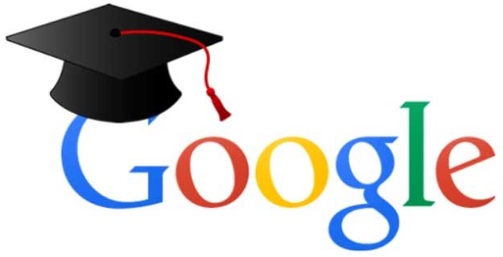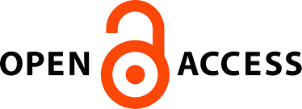| dc.contributor.advisor | Barahona Urbano, Helder | |
| dc.contributor.author | Correa Sanabria, Ángela Marcela | |
| dc.contributor.author | Leaño Léon, Lina Marcela | |
| dc.date.accessioned | 2012-11-30T19:25:40Z | |
| dc.date.available | 2012-11-30T19:25:40Z | |
| dc.date.created | 2008 | |
| dc.date.issued | 2012-11-30 | |
| dc.identifier.citation | Barry, T. E. (1993). Comparative advertising: What we have learned in two
decades. Journal of Advertising Research, 33(2), 19–29. | |
| dc.identifier.citation | Bettman, J. R. (1979). An information processing theory of consumer choice.
Journal of Marketing. 32, 256-260 | |
| dc.identifier.citation | Boubeta, A. (2000) El valor de la marca a partir de su relación con el consumidor,
Psicothema, 12, 247-254. | |
| dc.identifier.citation | Braidot, N (2005a) Estrategias que llegan a las neuronas de los clientes. Tiempo de
Mercadeo .2, 006,52-55 | |
| dc.identifier.citation | Braidot, N (2006b) Revisando el concepto de producto y marca en la era del
neuromarketing. Tiempo de Mercadeo., 007,26-28. | |
| dc.identifier.citation | Bronner, F (2007) In the mood for advertising. International Journal of Advertising,
26, 333-355 | |
| dc.identifier.citation | Burnstein, E., & Schul, Y. (1982). The informational basis of social judgments:
Operations in forming an impression of another person. Journal of
Experimental Social Psychology, 18, 217–234. | |
| dc.identifier.citation | Caballero, J (2007) El valor emocional. Marketing News, 02, 09, 12-16. | |
| dc.identifier.citation | Campbell, M. C. (1995). When attention-getting advertising tactics elicit consumer
inferences of manipulative intent: The importance of balancing benefits and
investments. Journal of Consumer Psychology, 4, 225-254.. | |
| dc.identifier.citation | Chessa, A. (2007) A neurocognitive model of advertising content and brand
name recall. The Marketing Journal, 26, 130-138. | |
| dc.identifier.citation | Coulter, R. H., & Pinto, M. B. (1995). Guilt appeals in advertising: What are their
effects? Journal of Applied Psychology, 80, 697–705. | |
| dc.identifier.citation | Droge, C., & Darmon, R. (1987). Associative positioning strategies through
comparative advertising: Attribute versus overall similarity approaches.
Journal of Marketing Research, 24, 377–388. | |
| dc.identifier.citation | Fortuny, R (2005) El marketing emocional competitivo. Tiempo de Mercadeo. 1,
004,12-16. | |
| dc.identifier.citation | Golden, L. L. (1979). Consumer reactions to explicit brand comparisons in
advertisements. Journal of Marketing Research, 16, 517–532 | |
| dc.identifier.citation | Gorn, G. J., & Weinberg, C. B. (1984). The impact of comparative advertising on
perception and attitude: Some positive findings. Journal of Consumer
Research, 11, 719–727 | |
| dc.identifier.citation | Grupo Braidot Argentina (2007) El neuromarketing le apunta a la cabeza. Tiempo
de Mercadeo. 3, 012, 15-18. | |
| dc.identifier.citation | Guido, G (2007) Experimental analysis of consumer stimulation and motivational
states in shopping experiences. The Market Research Society, 49, 365-386. | |
| dc.identifier.citation | Hardesty, D., Bearden, W., Carlson, J., Persuasion knowledge and consumer
reactions to pricing tactics. Journal of Retailing, 83, 2, 199-210. | |
| dc.identifier.citation | Homburg, C (2007) Responsiveness to Customers and Competitors:The Role of
Affective and Cognitive Organizational Systems. Journal of Marketing, 71,
18-38 | |
| dc.identifier.citation | Li, S,. Sun, Y,. Wang,. (2007) 50% Off or Buy One Get One Free? Frame Preference
as a Function of Consumable Nature in Dairy Products. The Journal of Social
Psychology, 147(4), 413-421. | |
| dc.identifier.citation | Millar, M (2006) El proceso de compra: ¿un asunto de hemisferios o de géneros?
Una mirada diferente al mercadeo para las mujeres. Tiempo de Mercadeo.
3, 009,26-29. | |
| dc.identifier.citation | Muñoz, Y (2004) La satisfacción del consumidor en las experiencias hedonistas.
Academia Revista Latinoamericana de Administración, 033, 52-67. | |
| dc.identifier.citation | Murre, J. (2007) Lo mas importante es ser el primero en la mente del cliente.
Harvard Deustro Marketing & Ventas, 80, 36-42. | |
| dc.identifier.citation | Noel, H. (2006) The Spacing Effect: Enhancing Memory for Repeated Marketing
Stimuli. Journal of Consumer Psychology. 16(3), 306–320 | |
| dc.identifier.citation | Novemsky, N,. Dhar, R,. Schwarz, N,. & Simonson, T,. (2007) Preference
Fluency in Choice, Journal of Marketing Research, 44, 347-356. | |
| dc.identifier.citation | Peña, J (2007) Las modas publicitarias. Publicidad y Mercadeo. 27, 313, 15- 19. | |
| dc.identifier.citation | Rao, A. R., & Monroe, K. B. (1989). The effect of price, brand name, and store name
on buyers perceptions of attribute information: An integrative review. Journal
of Marketing Research, 26, 351–357. | |
| dc.identifier.citation | Reinhard, M., Messner, M., (2006) Explicit Persuasive Intent and Its Impact on
Success at Persuasion—The Determining Roles of Attractiveness and
Likeableness. Journal of Consumer Psychology, 16(3), 249–259 | |
| dc.identifier.citation | Rivas, J (2006) Personalización. Tiempo de Mercadeo. 3, 010, 16-20. | |
| dc.identifier.citation | Rojas, L (2001) Validación del modelo simbólico-cultural del comportamiento del
consumidor. Revista Colombiana de Marketing, 3, 1-21. | |
| dc.identifier.citation | Rose, R. L., Miniard, P. W., Barone, M. J., Manning, K. C.,&Till, B. (1993). When
persuasion goes undetected: The case of comparative advertising. Journal of
Marketing Research, 30, 315–330 | |
| dc.identifier.citation | Rule, B. G., Bisanz, G. L., & Kohn, M. (1985). Anatomy of a persuasion schema:
Targets, goals, and strategies. Journal of Personality and Social Psychology,
48, 1127–1140. | |
| dc.identifier.citation | Settle, R. B.,&Golden, L. (1974). Attribution theory and advertiser credibility.
Journal of Marketing Research, 11, 181–185. | |
| dc.identifier.citation | Saravia, F. (2005) Consumer attitudes towards the future and some purchase
patterns. Journal of Consumer Behaviour. . 4, 6, 407-419. | |
| dc.identifier.citation | Shiffman (2005) Comportamiento del Consumidor (8ª. Ed.). Mexico: Prentice hall. | |
| dc.identifier.citation | Shiv, B (2007) Emotions, Decisions, and the Brain. Journal of Consumer
Psychology. 17, 3, 174-178. | |
| dc.identifier.citation | Schul, Y.,&Burnstein, E. (1985). When discounting fails: Conditions under which
individuals use discredited information in making a judgment. Journal of
Personality and Social Psychology, 49, 894–903. | |
| dc.identifier.citation | Schul, Y., Burnstein, E.,&Bardi, A. (1996). Dealing with deceptions that are difficult
to detect: Encoding and judgment as a function of preparing to receive invalid
information. Journal of Experimental Social Psychology, 32, 228–253. | |
| dc.identifier.citation | Schul, Y., & Mazursky, D. (1990). Conditions facilitating successful discounting in
consumer decision making. Journal of Consumer Research, 16, 442–451. | |
| dc.identifier.citation | Sparkman, R. M., & Locander, W. B. (1980). Attribution theory and advertising
effectiveness. Journal of Consumer Research, 7, 219–224. | |
| dc.identifier.citation | Stigler, G. (1961). The economics of information. Journal of Political Economy,
69, 213–225. | |
| dc.identifier.citation | Usunier, J. (2007) Product Ethnicity: Revisiting the Match Between Products and
Countries. Journal of International Marketing, 15, 32-72. | |
| dc.identifier.citation | Van Noor, G., Kerkhof, P., Fennis, B., (2007) Online versus Conventional Shopping:
Consumers' Risk Perception and Regulatory Focus. CyberPsychology &
Behavior. 10, 5, 731-733. | |
| dc.identifier.citation | Vasquez, M. (2007) Consumidores reclaman más responsabilidad de las marcas. Tiempo de Mercado. 4, 014, 50-53. | |
| dc.identifier.citation | Wilson, R. D., & Muderrisoglu, A. (1980). An analysis of cognitive responses to
comparative advertising. In Jerry Olson , Advances in Consumer Research
7,566–571. | |
| dc.identifier.citation | White, E. (2007). Sell to women’s is matter of sensibility according to Deloitte. The
Wall Street Journal. 14,2821,12. | |
| dc.identifier.citation | Wright, A., & Lynch, J., Jr. (1995). Communication effects of advertising versus
direct experience when both search and experience attributes are present.
Journal of Consumer Research, 21, 708–718 | |
| dc.identifier.citation | Wright, P. L. (1973). The cognitive processes mediating acceptance of advertising.
Journal of Marketing Research, 10, 53–62. | |
| dc.identifier.citation | Yates, F. (2007). Emotion Appraisal Tendencies and Carryover: How, Why,
and...Therefore? Journal of Consumer Psychology, 17( 3), 179-183, | |
| dc.identifier.citation | Zapata, J. (2007). Sino hay rendimiento no hay marketing. Tiempo de Mercadeo.
4, 013, 28-31. | |
| dc.identifier.uri | http://hdl.handle.net/10818/4493 | |
| dc.description | 20 Páginas. | |
| dc.description.abstract | Hoy en día las diferentes empresas enfocan sus propuestas de mercadeo a la diferenciación de géneros, ya que diversos estudios han demostrado que estas diferencias, tanto estructurales como de percepción, son determinantes a la hora de la compra de un producto; como en el caso de las mujeres quienes se ven más influenciadas por la marca, ya que es esta la que establece un vinculo emocional con el cliente, por la misma naturaleza sensible, es más probable que la mujer compre con el determinante de conseguir más que un producto un valor de marca. Los hombres tienden a buscar productos que satisfagan sus necesidades, ya que su preocupación vital es la funcionalidad del producto más que el valor emocional | es_CO |
| dc.language.iso | es | es_CO |
| dc.publisher | Universidad de La Sabana | |
| dc.source | Universidad de la Sabana | |
| dc.source | Intellectum Repositorio Universidad de la Sabana | |
| dc.subject | Publicidad-Aspectos psicológicos-Investigaciones | es_CO |
| dc.title | Diferencia de género en el proceso entre producto y marca | es_CO |
| dc.type | bachelorThesis | |
| dc.publisher.program | Psicología | |
| dc.publisher.department | Facultad de Psicología | |
| dc.identifier.local | 89299 | |
| dc.identifier.local | TE04217 | |
| dc.type.local | Tesis de pregrado | |
| dc.type.hasVersion | publishedVersion | |
| dc.rights.accessRights | openAccess | |
| dc.creator.degree | Psicólogo | |











